World War One: Tyne and Wear's shipbuilding prowess
- Published
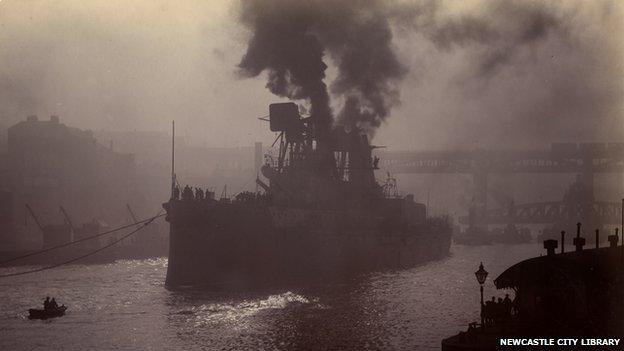
Fog of War: The Tyne played a part in the naval arms race which preceded World War One
World War One is remembered as the first industrial war. A clash of furnace and factory as much as flesh and blood.
The chimneys and cranes of this war machine consumed landscapes across Europe.
And few were more dominated than the 12 miles of the River Tyne, from the North Sea to the west of Newcastle, devoted to building the world's ships.
It is estimated more than three million tonnes of shipping were built in the yards here, on the nearby River Wear and in other north east yards, from 1914 to 1918.
Tens of thousands of people were employed directly by firms like Doxford's, Palmer's Shipbuilding & Iron Company Ltd and Swan, Hunter & Wigham Richardson Ltd.
Countless thousands more businesses and families relied on the yards to sustain the communities.
"It was impossible to go down the Tyne without hearing the sound of riveters' hammers," says maritime historian Ken Smith. "It was the sound of iron or steel plates being fixed together to build the hulls of ships."
In the early years of the 20th Century, with the Imperial German forces seeking to challenge Great Britain's century-old dominance of the sea, bigger, heavier battleships grew from the banks of the Tyne.
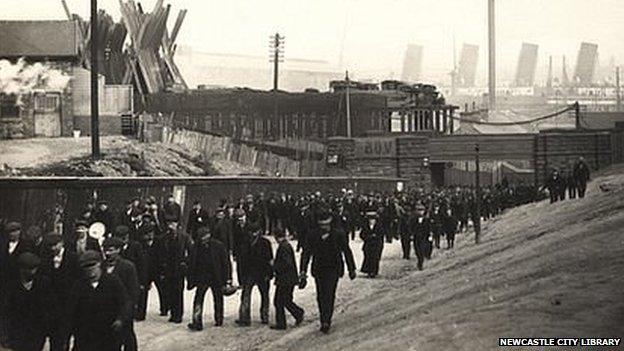
The yards are remembered as bringing jobs and pride to the whole region
Once the fighting had started, the yards also battled to repair damaged vessels and replace the vital cargo ships being preyed on by unrestricted U-boat warfare.
Mr Smith describes what the river would have been like in World War One.
"It's quiet now but 100 years ago it would have been extremely busy," he said.
"Ships would have been heading for and leaving Newcastle quayside, others would have been going out on trials having been built in the Tyne yards.
"There would have been tugs and wherries (motor barges) and a host of other vessels. It was extremely busy."
At this time, the Tyne boasted 19 shipyards of various sizes, with five capable of handling Dreadnoughts - the new breed of heavy battleship.
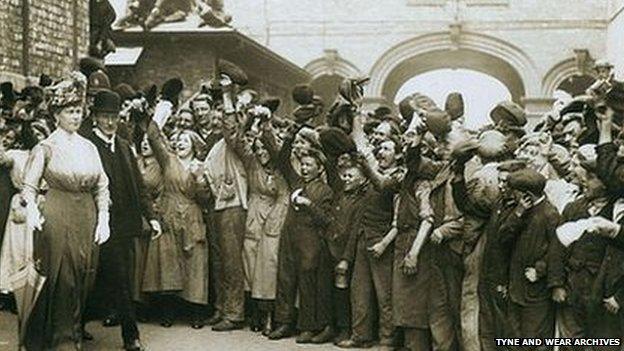
King George and Queen Mary (pictured) visited Doxford's shipyard in 1917
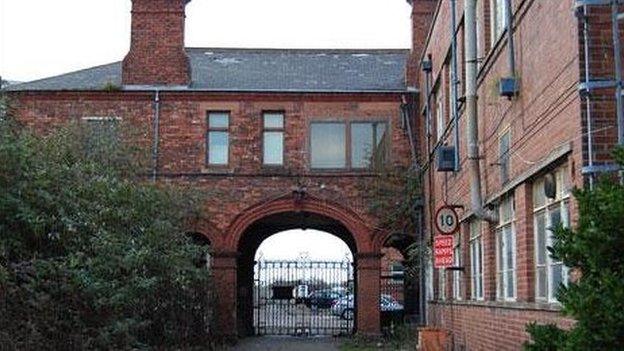
The gatehouse seen in the background of the picture above still stands derelict
But seeing war approaching, the Admiralty encouraged an increase in capacity. A new yard was built at High Walker and a floating dock was later moored at Jarrow, specialising in repairs.
Sheila Smith's grandfather James was part of the workforce. Tales of the herculean efforts to keep the navy in the fight have been handed down in the family.
"After one battle HMS Lion, which was the flagship of Admiral Beatty, was towed into the Tyne very badly damaged and instant repairs were necessary because the fleets had suffered so much damage.
"So, the shipyard workers were locked in to St Peter's Yard until the Lion was again seaworthy.
"My fathers said he thinks he saw nothing of his father at home for six days and the police brought his mother, and presumably the other mothers, news of the lock in."
She added: "On another occasion, at practically a moment's notice, the workers were sent home to collect their clothes and ration cards before being rushed off to the naval dockyard at Devonport, for weeks on end, again on ship repairs to keep the navy in some semblance of strength.
"[There is no semblance of resentment], you just did it and you did it really with pride. It was their part of the war effort."
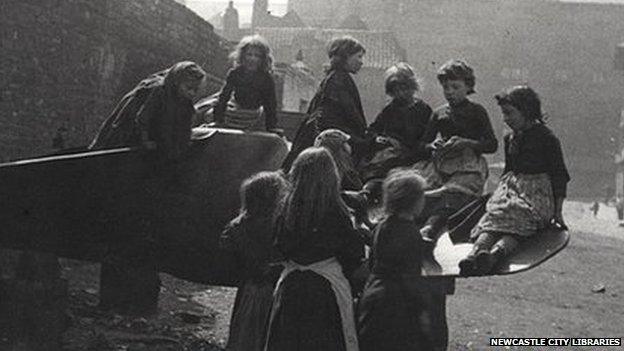
The presence of such huge industries dominated every aspect of life nearby
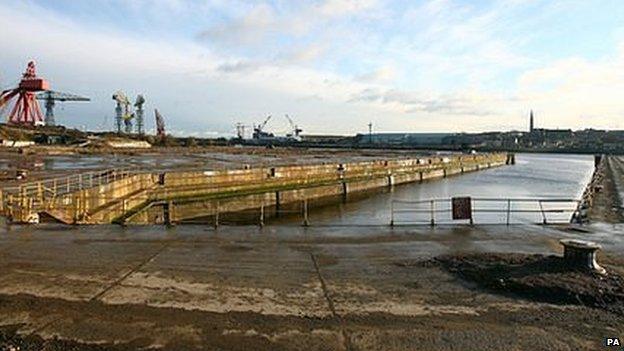
The last shipbuilding yard, Swan Hunter, closed in 2008 and awaits redevelopment
Historian Ron French's father was an apprentice at this time. He says the Tyne's contribution cannot be overestimated
"The UK also had shipbuilding centres in Belfast, Glasgow and on the Mersey, all producing ships for the war effort," he said.
"Yet the Tyne, besides the merchant ships, managed to build one third of capital ships, that is battleships, 19% of cruisers, 28% of the destroyers, 29% of the escorts and 14% of submarines.
"That is a substantial contribution, especially into quite a narrow river. Ships had to be launched at an angle, not straight out into the river, because they might crash into the other side."
The Tyne was however, by no means the only part of the North East to build ships.
Martin Routledge, keeper of history at Sunderland museum, said yards on the Wear built about one million tonnes of shipping during the war.
"Most of that was cargo ships," he says. "But there were also naval vessels built and Doxford's built 21 destroyers and they also built a considerable number of what they called , X-Lighters, which were an early kind of landing ship, for the Gallipoli campaign.
"And Doxford's was only one of nine yards working on the river working for the navy. It was a hive of industry during the war."
While less glamorous, Mr Routledge explains building cargo ships was just as important.
"Something like 9 million tonnes of merchant shipping lost during WWI," he said. "Britain wasn't self sufficient in food and wasn't self sufficient in raw materials.
"So, it was very dependent on supplies coming in, we needed to ships and Sunderland's contribution was remarkable."
Replacing lost ships kept the yards going after the war but the downturn of the 1920s closed many businesses.
World War Two revived demand but then competition from abroad and reduced demand saw North Eastern ship building industry whither.
In 2006, the RFA Largs Bay left Swan Hunter and entered history as the last ship to be completed on the Tyne.
"We want to put down our memories, and what we can research, in a form that the youngsters can look at and realise there was a shipyard at the bottom of their street that built this that and the other," said Mr French.
"But it's very difficult to dig up facts about this in the First World War, ships plans and whatever. It appears to have been very hush, hush, despite the scale of what was going on."
- Published9 October 2013
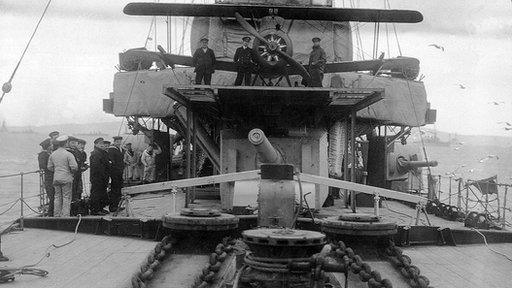
- Published28 August 2013

- Published9 July 2013
